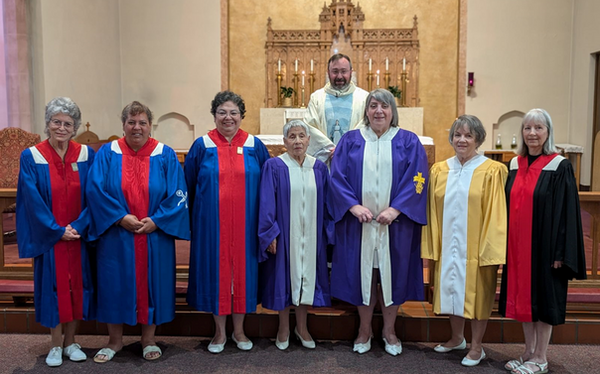Welcome to St. Mary!
We are a parish united in Christ, proclaiming God's love to our neighbors
through evangelization, service to others, liturgy, prayer, and education.
Welcome
Welcome to St. Mary, Our Lady of the Presentation Parish! It is my hope and prayer that you will find a home here.
It is the Eucharist that forms the foundation of what we do and who we are at St. Mary Parish. The graces that we receive at Mass enable us and impel us to engage in ministry and in the spread of the Gospel of Jesus Christ in our families and our community. I look forward to working with you as we continue to seek our Lord Jesus Christ and furthering his kingdom. Welcome to St. Mary Catholic Church
In Christ,
Rev. Ronald Nelson
Mass, Reconciliation, and Adoration Schedule
Sunday Masses
Saturday
5:30pm Vigil
Sunday
8:00am,
10:00am,
12:30pm Spanish,
5:30pm Life Teen
National Holiday Masses
Mass in English
9:00am
when observed
on a weekday
Daily Masses
Monday
12:15pm
Tuesday
12:15pm
Wednesday
8:00am, 12:15pm
Thursday
8:00am, 12:15pm
Friday
12:15pm
Saturday
8:00 am
Reconciliation
Wednesday
11:00am-12:00pm
Friday
11:00am-12:00pm
Saturday
3:00pm-5:00pm
If additional time is needed, please call the Parish Office to schedule an appointment with a priest.
December Liturgical & Sacramental Events
Vicariate
Penance Services
Advent Penance Services will be offered throughout the Vicariate in December.
Our Lady
of
Guadalupe
Friday, December 12
5:30 am Las Mañanitas
6:30 pm Procession & Mass
7:00 pm Dinner Reception
Christmas Mass Schedule
Wednesday, December 24
4:30, 7:00, & 10:30 pm
Vigil Mass English
Thursday, December 25
9:00 am English
11:00 am Spanish
The St. Mary Livestream Mass does not fulfill Sunday or Holy Day Mass obligations
but is for those who cannot attend Mass in person for health reasons.
Live Streaming Mass on YouTube
Upcoming Events






